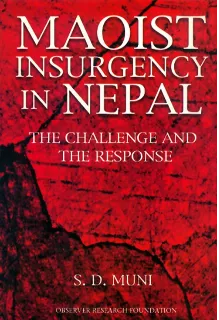The Maoist insurgency has emerged as one of the most serious political and security challenge in Nepal with its disturbing implications for the adjoining regions in India. The rise of the insurgency is dated to February 1996. It has, by now, taken a toll of some 7500 lives with many more casualties. The numbers of these casualties and deaths have swelled rather significantly after November 2001 when an open confrontation, almost a civil war, broke out between the Royal Nepal Army (RNA) and the Maoists. After about fourteen months of this civil war, the Maoists and the Nepalese government, now led by the King with a puppet government, agreed on the 29th January 2003, to ceasefire and start negotiations; thus going back to the situation that existed before the outbreak of the civil war. In this paper, we propose to look at the nature of the insurgency and the prospects of its solution.
I – The Roots and the Emergence of the Maoist :
The roots of the Maoists can be traced to the Communist movement in Nepal, which took birth in India in 1949 with the aim of actively participating in the anti-Rana struggle of 1950-51. When the first general elections of Nepal were held in 1959, under a Constitution to establish democracy with Constitutional Monarchy, the communists were still very weak and isolated. They won barely four seats in the elections and did not count for much of political influence. The Communists got split on the question of support to King Mahendra’s take-over in December 1960, from the then elected government of the Nepali Congress, led by the charismatic leader B.P.Koirala, barely after it had been in office for 18 months. The faction or the Communist Party that sided with the place got support and encouragement since the King wanted to use the Communists for countering the Nepali Congress and all other democratic forces opposing his direct rule, which was subsequently given the cover of the Panchayat System. The evolution of the Communist Movement in Nepal was also influenced by developments in the International Communist Movement, particularly the Sino-Soviet split, but it may be a digression to go into the details of those developments here. It is pertinent here to note that at least until the later half of the 1960s, both the pro-Soviet and the pro-Chinese communist factions operating within Nepal supported the King and his Panchayat System. The only exception was the Communist faction led by Pushpalal who still operated from its bases in India and worked along with the Nepali Congress to oppose the King and his system. The interests of Nepal based Communist groups converged on opposing the Nepali Congress led democratic resistance to the King, as that was seen to be receiving support and sustenance from India. The so-called anti-India nationalism was whipped up by King Mahendra and his associates and made a binding thread between the King and the divergent Communist factions.
The views expressed above belong to the author(s). ORF research and analyses now available on Telegram! Click here to access our curated content — blogs, longforms and interviews.





 PREV
PREV


